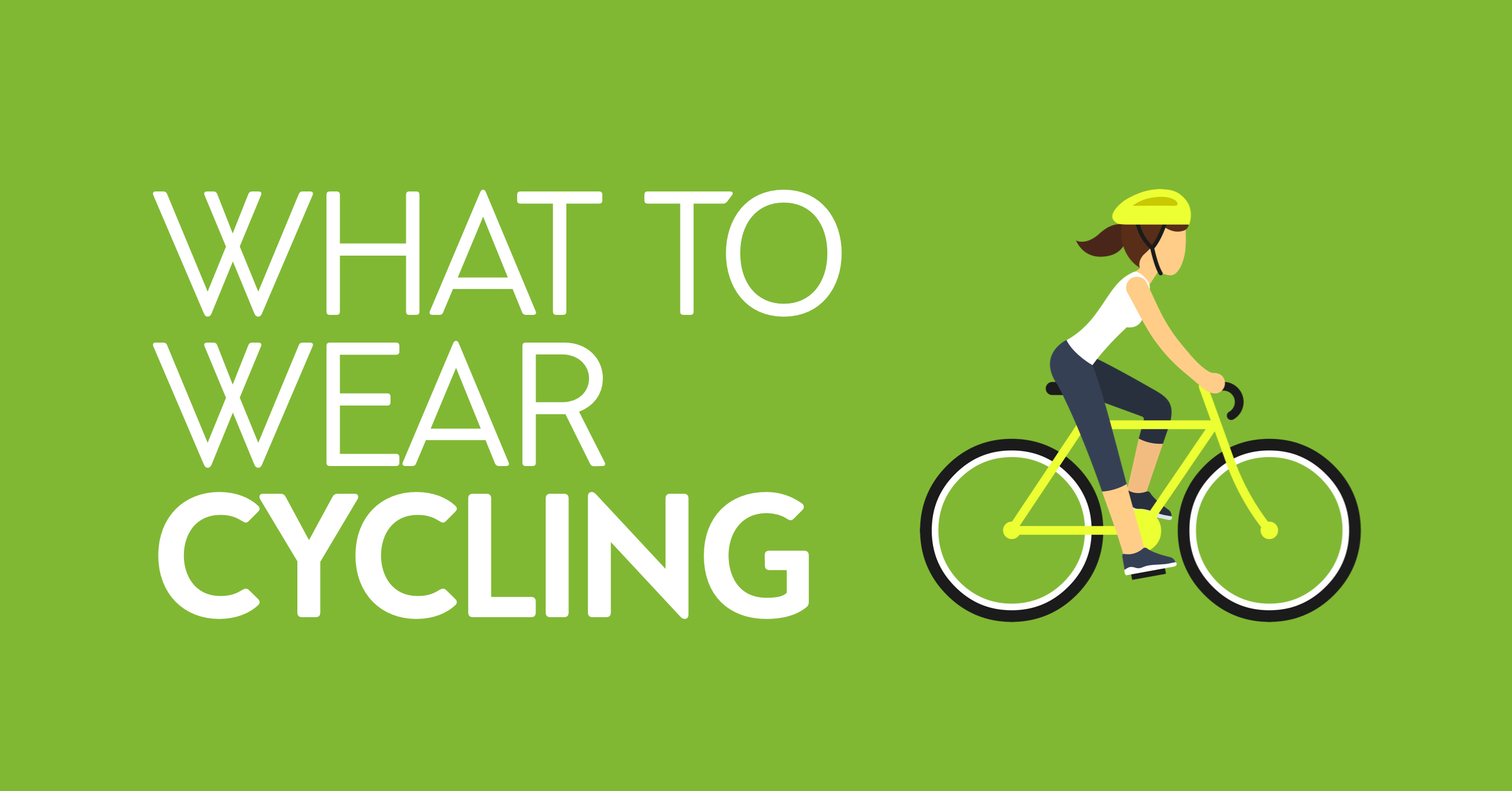
What to Wear Cycling
Whether you ride to work or you're a keen road or mountain biker, you need cycling-specific clothing. Jerseys and shorts just won't do if you're embarking on a journey to become a serious cycler. Comfort and safety are key and you need the right equipment to keep cool in warm weather and warm you up in colder temperatures. From base layers and leggings to waterproofs and helmets, we've listed everything you need to get started when you go cycling.
What to wear cycling in Autumn and Winter
Cycling Tops
When cycling in autumn and winter, an ordinary cotton t-shirt just won't do. You need something that will retain body heat if the temperature drops. When it comes to tops, layering is key. So, be sure to pack something warm.
Cycling Jacket
Again, something close-fitting is ideal here. That way, you can easily layer up if it is cold and wet by wearing a waterproof jacket on top. You should look for something breathable, windproof and waterproof for light showers. Bright colours and reflective patches are always recommended so you can be seen easily.
Winter cycling tops can range from £10 to £300.
Cycling Bottoms
For a long bike ride during the cold months, you need to be comfortable and warm. You need something flexible that doesn't dig in and provides optimum comfort. So, go for padded bottoms in a lycra material so it hugs in all of the right places and doesn't get in the way while you're cycling.
Leggings
If you're on a long bike ride, padding will be your best friend and increase comfort along the way. If you're new to cycling, baggy trousers or tight jeans could become your worst enemy. So, invest in a good pair of close-fitting cycling leggings to keep you warm.
Winter cycling bottoms can range from £10 to £100.
Base Layers
When the cold weather hits, you may need to consider adding some base layers. So, look for a long-sleeved jersey and leggings made from merino wool. Not only is merino wool a great insulant, but it is also soft, breathable and can resist odours. This is exactly what you need to keep you warm during the cooler months. Leg or knee warmers are also a great option to keep you warm during those chilly morning commutes.
What to wear cycling in Spring and Summer
Cycling Tops
During spring and summer, you need something that will keep you cool when you start to work up a sweat.
Cycling Jersey
A short sleeve jersey t-shirt is probably suitable for a short journey, but when you start to work up a sweat, it just won't do you any favours. You need a cycling jersey that is breathable, absorbs moisture and is tight-fitting to make you more streamlined. You should opt for a lycra cycling jersey with zip guards so it doesn't rub or pinch, pockets large enough for your valuables and something that fits like a glove.
Summer cycling tops can range from £10 to £120.
Cycling Bottoms
For a long bike ride in the sunshine, you need to have comfortable and breathable gear, providing optimum comfort.
Shorts
Perfect for summer cycling, cycling shorts are streamlined and padded shorts mean extra comfort. Bib shorts with mesh straps are breathable and if you can find a pair of cycling shorts with a non-slip material around the thigh this can prevent chafing and stop them from riding up.
Summer cycling bottoms can range from £5 to £75.
What to wear when cycling in rain
When cycling in rain, you need some waterproof cycling clothes. So, you should invest in some extra layers so you don't get caught out in the middle of a storm.
Water Resistant Layers
We all know that the weather in the UK can turn in an instant. So, you should always be prepared and pack waterproof layers when you head out on your bike. Waterproof cycling jackets usually have longer sleeves than your average waterproof jacket which keep more of your arm dry when you're leaving over the handlebars. Cycling trousers or over trousers are a good choice for keeping your legs dry and are easy to slip on over your shorts or leggings so your muscles don't become cold and wet.
Waterproof cycling clothes can range from £30 to £400.
Cycling Safety Equipment
While you should always wear suitable clothing for cycling, you certainly shouldn't forget about accessories. And no, we don't mean fashion accessories to make you look cool. We're talking about accessories which can increase your safety and comfort while on the road.
Helmet
Perhaps the most important item of your cycling attire is your helmet. They are the most effective way to protect your head in the event of an accident. You will want something that is comfortable, well ventilated and, if you are a keen road cyclist, you should go for something aerodynamic that has undergone rigorous safety tests.
Gloves
Not just ideal for cold weather, cycling gloves can improve grip on the handlebars in wet weather and also help to prevent blisters on your hands. Fingerless gloves are often preferable for the summer months but as the weather turns cooler, full gloves are probably more suitable. You will likely have a choice of padding, ventilation and waterproof gloves, depending on your preference, but you should always opt for gloves with good grips on the palms and fingers.
Shoes
If you're only going on a short journey, a pair of trainers may suffice. When coupled with shoe covers, this can be a cost-effective option to keep your feet warm and dry while still allowing you to grip the pedals. However, if you're becoming a serious cycler and are starting to focus on your performance on the road, then it's time to invest in a pair of cycling shoes. There is plenty of choice for different budgets but you should look out for the sole, cleat system and the fit.
Glasses
It's always a good idea to have some sunglasses with you in case the weather brightens up, but you should also consider wearing glasses, even for duller days. Not only do glasses protect from the glare of the sun but they can also act as a barrier from the wind, rain or snow. It is also worth investing in a pair with interchangeable tinted lenses to accommodate different weather conditions.
How cycling safety equipment should fit
Helmet
To ensure a good fit, the helmet should sit level on your head and cover your forehead, with the front edge positioned just above your eyebrows. The straps should be snug but not overly tight, and you should be able to fit no more than two fingers between the strap and your chin.
Gloves
When fitting cycling gloves, ensure they are snug but not too tight, with no excess material bunching up. The fingers should reach the ends of the glove without feeling constricted.
Shoes
When trying on cycling shoes, ensure there is a snug fit around the heel and midfoot, with no excessive movement or slippage. The toes should have some wiggle room, but they shouldn't feel cramped or restricted.
Glasses
When fitting cycling glasses, ensure the frame sits comfortably on your face without pinching or pressing on your temples or nose. The lenses should cover your eyes fully and offer full peripheral vision.
So, whether you're on a mountain bike, road bike or a city bike, you should always think about what to wear cycling before setting off. Plan for changes in the weather and put your safety and comfort first. If you're travelling further afield for a family bike ride or cycling holiday, make sure you have a secure bike rack to carry your beloved bikes. Why not consider investing in a towbar so you can use a towbar mounted bike rack and load your bikes up with ease.

